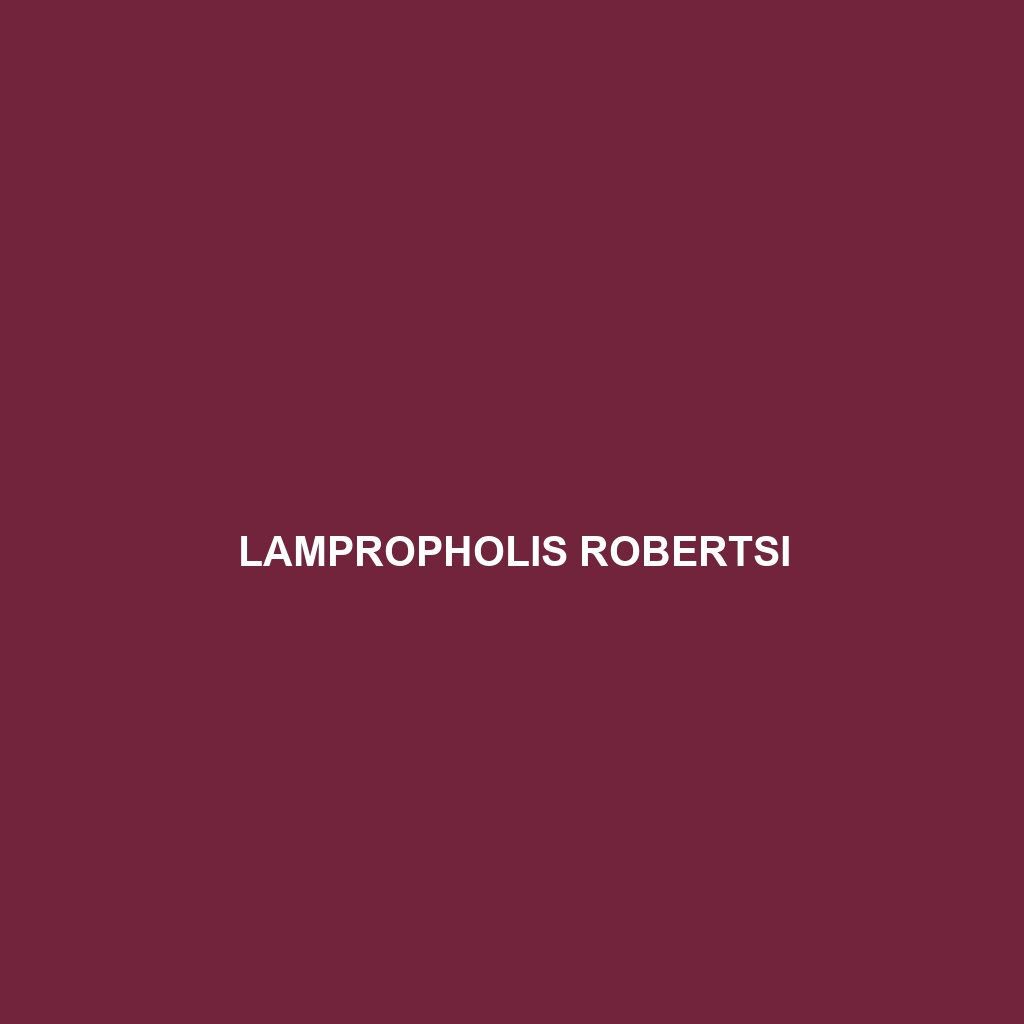Common Name
Lampropholis robertsi
Scientific Name
Lampropholis robertsi
Habitat
Lampropholis robertsi, commonly known as Roberts’ Skink, is primarily found in Australia, particularly in the southeastern regions including New South Wales and Victoria. This species prefers a variety of habitats such as rainforests and temperate forests, which offer ample cover and humidity. It is also identified in savannas and grassy areas where leaf litter provides shelter. The climate in these regions ranges from temperate to subtropical, creating a moist environment ideal for the skink. These factors contribute significantly to ensuring that Lampropholis robertsi can thrive and maintain healthy populations in its natural habitat.
Physical Characteristics
Lampropholis robertsi is easily distinguishable by its slender body, averaging 15 to 20 centimeters in length. It features a smooth, shiny, and elongated structure with vibrant colors that enhance its camouflage capabilities. The coloration typically ranges from a rich brown to olive green, adorned with lighter stripes along the sides of its back. A unique characteristic is its small, rounded head that merges seamlessly into its body, making it look more streamlined. Its elongated tail, which may comprise over half its total length, aids in balance and movement across various terrains.
Behavior
This species exhibits a non-aggressive temperament and is primarily diurnal, often engaging in foraging during the daylight hours. Lampropholis robertsi is known for its secretive behavior, relying on the cover of leaf litter and fallen logs to avoid predators. It exhibits territorial behaviors, with males often engaging in displays to establish dominance during the mating season. Notably, this skink has fascinating social interactions, often found basking alongside conspecifics in safe environments. Their quick reflexes and ability to flee into crevices make them adept at avoiding capture, highlighting their survival strategies in complex ecosystems.
Diet
Lampropholis robertsi is primarily an insectivore, feeding on a diet that consists mainly of small insects, worms, and other invertebrates. Their foraging habits involve actively searching for food during warm periods of the day, often employing a sit-and-wait strategy to capture unsuspecting prey. The skinks utilize their keen eyesight and agility to swiftly hunt down their food, providing them with the nutrients required for growth and reproduction. This reliance on invertebrates also plays a role in regulating local insect populations, maintaining the balance within their ecosystem.
Reproduction
The breeding season for Lampropholis robertsi typically occurs in the warmer months between October and February. Males engage in elaborate courtship displays, including head bobbing and body movements, to attract females. After successful mating, females will lay clutches of 3 to 6 eggs in moist soil or hidden locations to protect them from predators. The incubation period lasts approximately 6 to 8 weeks, depending on environmental conditions, and hatchlings are independent from birth. Parental care is minimal, with the young skinks immediately venturing out to establish their territories.
Conservation Status
The conservation status of Lampropholis robertsi is currently listed as Least Concern according to the IUCN Red List. However, habitat destruction due to urbanization and agriculture poses significant threats to their population numbers. Conservation efforts focus on habitat protection and restoration to ensure sustainable living conditions for these skinks. Awareness programs are also in place to educate local communities about the ecological importance of maintaining healthy native environments.
Interesting Facts
One interesting aspect of Lampropholis robertsi is its remarkable ability to regenerate its tail after losing it due to predation or other factors. This adaptive trait not only aids in escape but also provides a longer-term survival mechanism, allowing the skink to thrive despite potential setbacks. Additionally, its vibrant coloration serves dual purposes of camouflage among leaf litter and a warning signal to potential predators, showcasing an evolutionary adaptation to its environment.
Role in Ecosystem
Lampropholis robertsi plays several crucial roles in its ecosystem. As an insectivore, it helps control insect populations, contributing to the health of its habitat. Furthermore, it serves as prey for various predators, including birds and larger reptiles, thus fitting into the food web. The skink’s presence indicates a balanced ecosystem, and any fluctuations in its population can signal changes in environmental health. Overall, this species contributes to nutrient cycling and maintaining biodiversity within its natural habitat.
